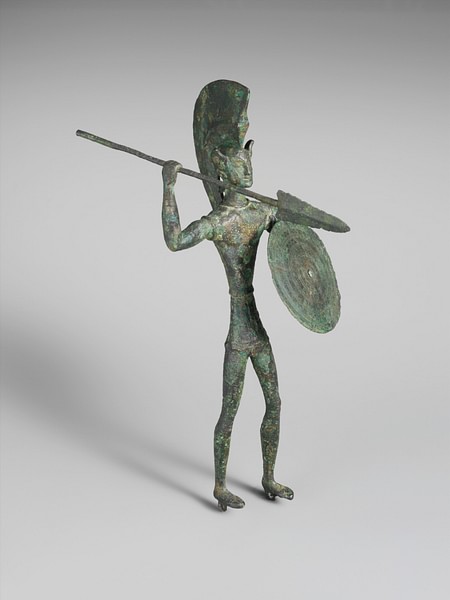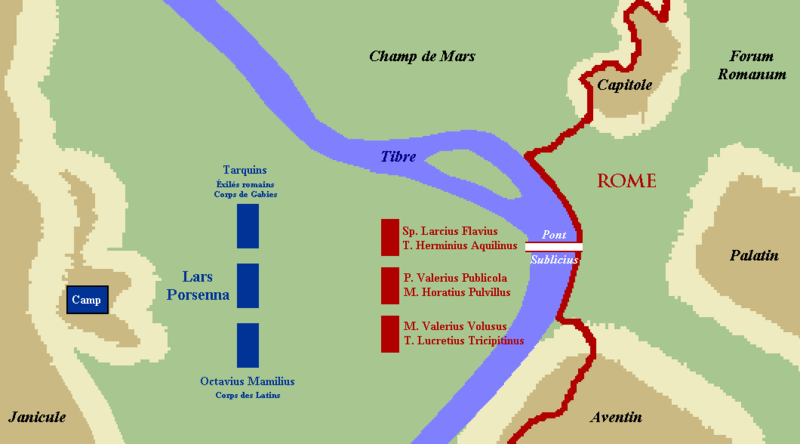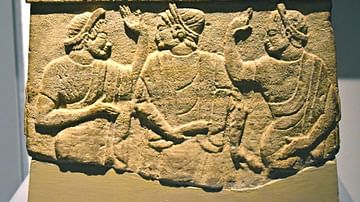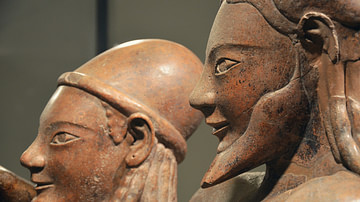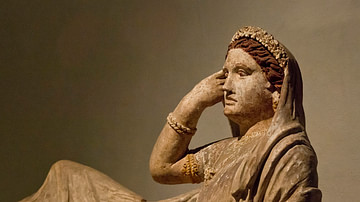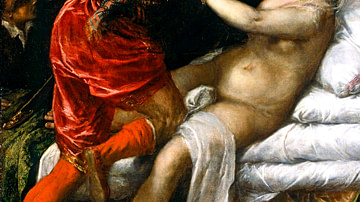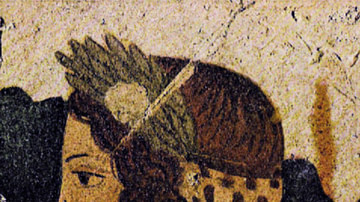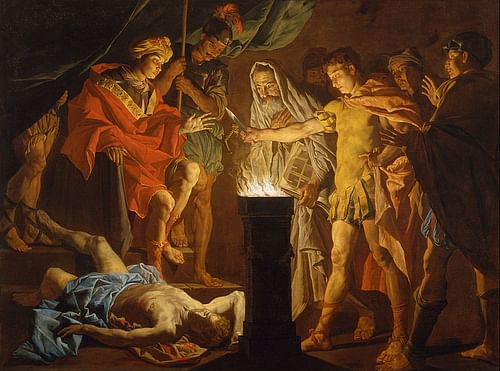
Lars Porsenna was the semi-legendary Etruscan king of Chiusi who famously attacked and probably occupied Rome c. 508 BCE when the city had just exiled its last king and was moving towards becoming a republic. His extravagant tomb is described by Pliny but has never been found.
Details of the early life of Lars Porsenna (also spelt Larth Porsina), his accession, and even the dates of his reign are all lacking. This is perhaps not surprising for a figure who is more legend than fact. He sprang into history only via the records of Greek and Roman historians writing centuries after his lifetime and who were only concerned with his infamous siege of Rome. More is known of his kingdom Chiusi, Etruscan name Clevsin and Clusium to the Romans, which was a powerful city in central Italy and a prominent member of the Etruscan League. The growth and prosperity of Chiusi in precisely the period of Porsenna's reign is attested by archaeological evidence.
Lucius Tarquinius Superbus
Lucius Tarquinius Superbus (the 'Proud') was a member of the Etruscan Tarquinii clan from Tarquinia. He was Rome's seventh, and in the event, last king. Following his tyrannical reign and the rape of the Roman noblewoman Lucretia by Tarquinius' son Sextus and her subsequent suicide, the aristocrats of Rome, led by Lucius Iunius Brutus and Lucius Tarquinius Collatinus, persuaded the assembly to exile their king in 510 BCE. Brutus and Collatinus declared themselves Rome's first consuls, and the Roman Republic was born. However, Tarquinius was actually away laying siege to Ardea at the time of his exile vote and so was still both willing and able to make a serious attempt to retake his throne. Tarquinius first joined forces with the Etruscan cities of Cerveteri, Tarquinia, and Veii. A combined force attacked Rome but was defeated at the battle of Silva Arsia. Undeterred Tarquinius then convinced Lars Porsenna, to lay siege to Rome c. 508 BCE.
The Siege of Rome
The exact motivation for Porsenna's attack is unclear. Traditionally, this second attack was seen as an attempt to restore Rome's monarchy and Lucius Tarquinius to the throne, but following Porsenna's siege of the city he, instead, did one of two things. Version one has Porsenna finally withdrawing after being impressed with the city's fortitude and especially the heroism of figures such as Horatius Cocles (the 'one-eyed') and Gaius Mucius Scaevola.
Horatius Cocles had courageously held the wooden Sublician bridge, at that time the only access across the Tiber, against Porsenna's entire fighting force until it could be destroyed and the advancing army halted. Caught on the wrong side of the river the hero had had to swim back across to safety. Meanwhile, Mucius Scaevola was perhaps even more daring and stole into Porsenna's camp - the Etruscan king had by then set up his siege of the city - in an attempt to assassinate the king in his own tent. Unfortunately, Mucius did not know what Porsenna looked like and so mistakenly killed the king's secretary sitting next to his master. Captured, Mucius bravely displayed his resistance to torture by voluntarily putting his left hand into a fire (hence his name Scaevola, meaning left-handed).
Porsenna, seeing that such a heroic people would not be quashed, then gave command of half his army to his son Arus who moved off to attack the Latin town of Aricia. Then a third heroic figure Roman writers could not resist recording for posterity appears: Cloelia. She was one of a number of hostages Porsenna took to guarantee the safe withdrawal of troops from the city, but she escaped and swam across the Tiber. Impressed with her courage Porsenna set her free and half of the other Roman hostages he held, selected by Cloelia.
Version two of the siege, and much the more credible one, has Porsenna victorious and Rome surrendering to the Etruscan king, who then, far from reinstalling Tarquinius Superbus, acted to abolish the monarchy of Rome and imposed a harsh peace treaty which included complete disarmament and the handing over of all lands on the right bank of the Tiber. Porsenna then used the city as a military base to attack the Latin cities starting with Aricia in 504 BCE.
Naturally, this version was a little less palatable for the Roman reader than the heroic first version. It would also seem unlikely that Porsenna and Tarquinius could have been allies given their long-standing rivalry and the latter's alliance with Chiusi's traditional enemies the Latins and Cumae. Dionysius of Halicarnassus further states that the Tarquinii had dishonoured Roman ambassadors and hostages, and for this reason, there was a rupture between the ex-king and Porsenna. In the event, Arus would be defeated at Aricia - the city had support from Cumae - and was killed in the action. The remnants of Porsenna's army then made their way back to Rome.
Meanwhile, Rome's ex-king Tarquinius was forced to seek refuge with his son-in-law Octavius Mamilius, the dictator of the Latins (according to one version of the legend), who sought, rather improbably given the longtime rivalry between Rome and the Latin cities, to restore Tarquinius to the throne. Following Mamilius' defeat at the Battle of Lake Regillus (499 or 496 BCE) to the Romans - aided by the legendary appearance of the semi-divine figures of Castor and Pollux - Lucius Tarquinius moved on to Cumae in Campania where he died in 495 BCE.
Porsenna's Tomb
What happened to Porsenna after his withdrawal from Rome is not known besides that the peace between Chiusi and Rome was respected. His next and final appearance in literature is a detailed description of his tomb by the Roman writer Pliny who quotes word-for-word a text by Varro. Located outside the city walls of Chiusi, his description is as follows:
a square monument built of squared blocks of stone, each side being 300 feet long and 50 feet high. Inside this square pedestal there is a tangled labyrinth, which no one must enter without a ball of thread if he is to find his way out. On this square pedestal stand five pyramids, four at the corners and one at the centre, each of them being 75 feet broad at the base and 150 feet high. They taper in such a manner that on top of the whole group there rests a single bronze disk together with a conical cupola, from which hang bells fastened with chains; when these are set in motion by the wind, their sound carries to a great distance, as was formerly the case at Dodona. On this disk stand four more pyramids, each 100 feet high, and above these on a single platform, five more. (Historia Naturalis 36.91-3, quoted in Simon, 207-8)
The description may be exaggerated, and no trace has ever been found of the tomb despite numerous attempts in the vicinity of Chiusi. Still, the fact that such a monument was deemed plausible by the Romans is testimony to the wealth and power of Etruscan Chiusi and its greatest ever king.
